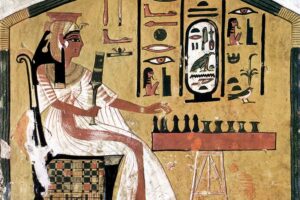Students dressed in robes and square hats scurry between stately limestone buildings.
At the “pubs”, visitors debate art, literature and science at tables that bear the mark of being there for ages.
Oxford is characterized by education, traditions and carefree student life.
The city, which is found in the province of Oxfordshire in approx. 80 km away from London, the last thousand years have formed the framework for the sophisticated life of the spirit, the drinking habits of the intellectuals and the sordid group fights.
If legends are to be believed, Alfred the Great laid the foundation for the university in 872. It is said that the king met some monks on his journey across a ford in the river Thames, where farmers used to cross the river with their oxen.
The monks and Alfred talked about education for days, and as a result, the town became the center of culture in the country, if the legends are to be believed.
The story is probably not true, but it is certain that the university, which is mentioned in sources from the year 1096, is one of the oldest in Europe.
A spilled wine led to a group fight
However, students only really began to flock to the center of education when Henrik II forbade young English men to study in France in 1167, which at that time was the center of culture in Europe and the arch-enemy of England.
Over the next few centuries, one limestone building after another popped up in the green fields of Oxfordshire, the limestone being sourced from the nearby Headington quarry.
The medieval church dominated education and as a result only Christian young men were allowed to study at Oxford. The university teachers were also connected to the church, which forbade them to marry, and this ban was not lifted until 1871.
At the beginning of the 17th century, Oxford was just a small town.
However, the students and teachers did not behave in a particularly Christian way. Riots and disputes with the locals were the order of the day.
The quarrels came to a head on February 10, 1355, when two students hit a tavern owner on the head with a wine goblet, angry that they had received spoiled wine, according to them.
Local people and students took part in the fights that lasted for two days and cost 63 students and 30 local people their lives.
The university administration finally got fed up with the protests and in 1410 all students were sent to live in student gardens to avoid them “sleeping during the day and spending the nights in taverns and brothels”.
Flower of empire gathered in Oxford
The university and the student gardens became especially popular in the 19th century. The British Empire stretched across the globe, and the state needed well-educated administrators.
A large number of students from the ranks of the upper class and from the upper layers of the middle class applied for school accommodation from the middle of the 19th century.
The high attendance of students and the development in the field of natural sciences meant that the lecture halls, student associations and pubs of the city were filled with curious and inquisitive students.
Students in Oxford’s golden age, which arguably reached the middle of the 20th century, included writers such as Tolkien and CS Lewis, Prime Minister Robert Peel, and the adventurer Lawrence of Arabia.
Students from the outer reaches of the British Empire also studied at Oxford. It can be said that the university has been the seat of the imperial elite since the middle of the 19th century.
In 1945, the peace that followed World War II ended the empire and England’s status as a great power. Oxford, on the other hand, is still at the forefront, but the university was voted the best university in the world in 2019.
Five places you can’t miss
You can learn about student life at Christ Church College
The models for the student gardens in Oxford were taken from medieval palaces. Each student park or “college” as they are called, was built with a large dining hall in the middle, as is known from the grand buildings of the past.
The hall in Christ Church College is considered exceptionally beautiful, but the ceiling in it was made by Humphrey Coke, Henry VIII’s courtier.
During holidays and bank holidays, when the students are not using their rooms, visitors can stay overnight in Oxford’s student gardens and have breakfast in one of the elegant stalls.
Short in honor of the founder of the fund
South African diamonds brought Cecil Rhodes (1853-1902) a fortune. Among other things, he used his wealth to establish a fund for foreign students at the University of Oxford. That fund was used, among others, by Clinton, the former US president.
Cecil Rhodes was honored with a statue in front of Oriel College in Oxford.








